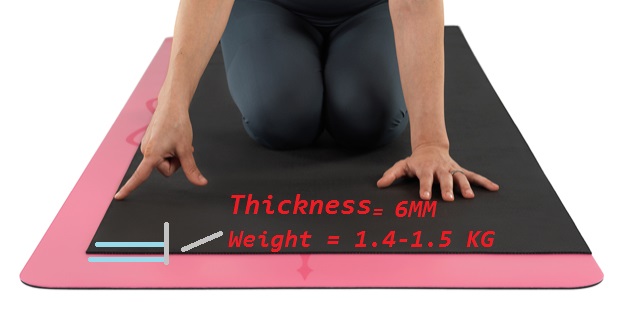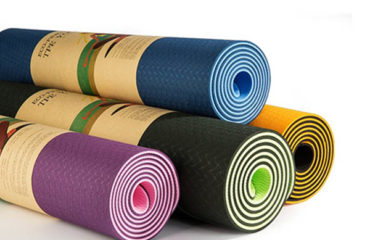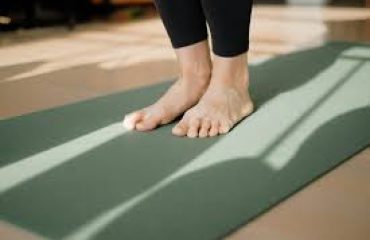Based on the Previous article, give you some suggestions for reference:
1. Press it with your thumb. If the footprint of the place where the yoga mat is pressed has not been bounced for a long time, it indicates that the elasticity is not enough. The thickness of many PVC yoga mats is 6mm, but the material is not enough at all, only about 1.1-1.2 KG, which will inevitably lead to insufficient density and poor elasticity. Normally, the 1.4-1.5KG 6MM PVC yoga mat is flexible enough to effectively protect the knee and soft tissue of the yoga practitioner;

2, Wet a small piece of yoga mat, imitate the situation after sweating, see if it will slip. If it is slippery, the PVC foaming particles are too small. TPE-made yoga mats generally do not slip;
3. Use an eraser yoga mat to try to make the material easy to break? This is a good way to test PVC yoga mats;
4, Pay attention to the material of the yoga mat, choose environmentally friendly. Traditional yoga mats are made of PVC. PVC is a long-term source of plastic pollution that pollutes the environment. And the plastic smell emitted will also affect the effect of the exercise. The taste of the yoga mat of PVC material is impossible to eradicate, and it is non-toxic and tasteless.
5, Eco-friendly yoga mat made of natural latex, hemp and other natural materials, does not contain PVC, the current TPE is an environmentally friendly popular yoga mat. Someone asked why the TPE yoga mat also smells?
TPE yoga mat packaging is made of plastic film, and its TPE can also be degraded, especially at high temperatures. TPE is a double layer of two layers in the middle is glued with a strong glue, packaged after leaving the factory, so the smell of glue will take some time to disperse. When packing TPE yoga mats, in order to prevent the mats from sticking together, a layer of talcum powder or the like is applied to the surface, which is one of the sources of taste. Therefore, the odor of the TPE yoga mat is plastic film, super glue, and smooth surface coating, because there is no way to disperse the odor of the mat.
Solution: After disassembling, wipe it with a damp towel and water and dry it in a ventilated place. After that, there is no smell.
After having a piece of your own yoga mat, you should not only take care of it, but also clean it. To ensure hygiene, it is best to wash it once a week.
Ordinary simple cleaning, wipe directly with a wet towel, dry it, or you can use two cups of water and 4 drops of dishwashing detergent into the sprayer, spray the yoga mat, then wipe with a dry cloth dry.
When the TPE yoga mat is not in use, it should be rolled up and wrapped with a buckle. Or directly tiling, do not fold, otherwise there will be creases, which will crack severely.
If the yoga mat is very dirty, it can be washed directly with water with a neutral cleaning solution. It is not recommended to use washing powder water for cleaning. Because it is difficult to wash away the residue of washing powder, it will make the yoga mat slippery. Gently scrub the mat with cloth neutral detergent solution, then rinse with clean water, and finally roll up the yoga mat with a dry towel, blot excess water and dry. In addition, do not let the sun shine directly on the PVC and TPE yoga mats, which will accelerate the aging of the material.










